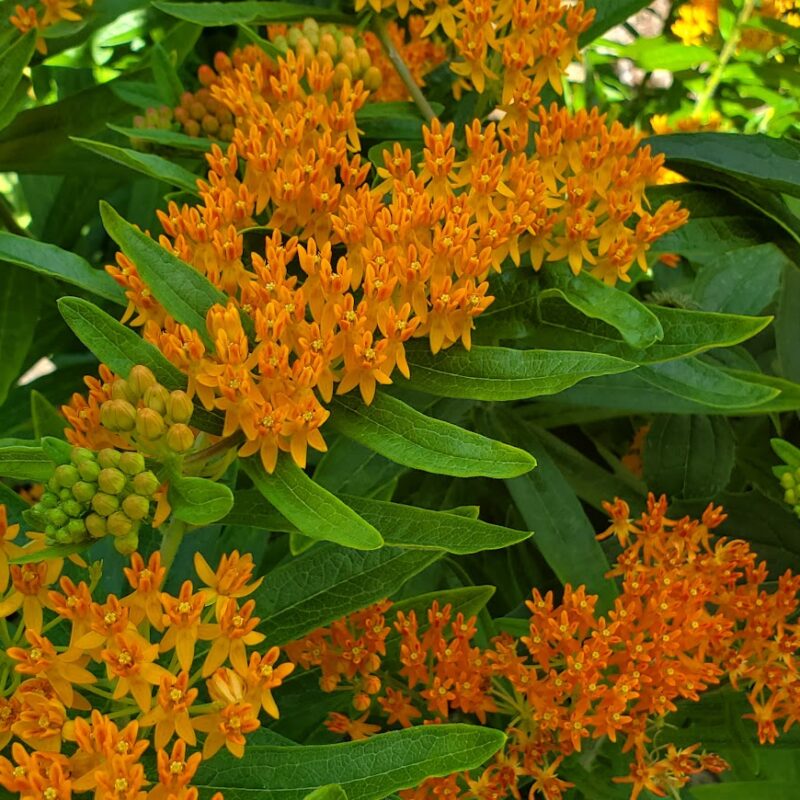Butterfly WeedAsclepias tuberosa
a.k.a. Butterfly Milkweed
One of the best natives for dry, sunny areas, butterfly milkweed is a host plant for the larva of the monarch butterfly and provides nectar and pollen for butterflies, bees, and other pollinating insects. Bright orange flowers sit on top of a compact plant of 2' by 2' at maturity.
USDA symbol: ASTU
General Information
| Plant Type | Forb |
|---|---|
| Height | 2 feet |
| Light Exposure | Sun, Part Sun |
| Soil Moisture | Dry |
| Bloom Color | Orange |

Tolerances
| Flooding / Inundation Tolerance | Low |
|---|---|
| General Resilience | 6 |
| Salt Tolerance | Medium |
| Stress Tolerance | Drought Tolerant, Fire Tolerant, General Disturbance |
Pollinator Value: Very High
| Bloom Months | June to August |
|---|---|
| Larval Host of | Butterflies, Moths |
| Specific Pollinators Hosted | Danaus gilippus, Danaus plexippus, Euchaetes egle |
| Pollinator Benefit | Insect Pollinated, Provides Nectar, Stem Nesting, Supports Generalists |
Project Planning
| Project Type | Boulevard, Rain Garden, Restoration, Sandy or Engineered Soils, Shoreline Buffer, Upland Buffer |
|---|---|
| Coefficient of Conservatism | 6 |
| Herbivore Sensitivity | Low |
| Lifespan | Perennial |
| Rate of Spread | Slow |
| Soil Stabilization | Deep |
| Vegetative Reproduction | Clonal |
Range
| County | Aitkin, Anoka, Benton, Blue Earth, Brown, Cass, Chippewa, Chisago, Crow Wing, Dakota, Faribault, Fillmore, Freeborn, Goodhue, Hennepin, Houston, Isanti, Jackson, Kandiyohi, Le Sueur, Martin, Mille Lacs, Morrison, Mower, Nicollet, Olmsted, Pine, Ramsey, Redwood, Renville, Rice, Scott, Sherburne, St. Louis, Stearns, Steele, Wabasha, Waseca, Washington, Watonwan, Winona, Wright |
|---|---|
| Ecoregion | Driftless Area, Lake Agassiz Plain, North Central Hardwood Forests, Northern Glaciated Plains, Northern Lakes and Forests, Northern Minnesota Wetlands, Western Cornbelt Plains |
| Approximate Eco Province | Eastern Broadleaf Forest, Laurentian Mixed Forest, Prairie Parkland, Tallgrass Aspen Parklands |
